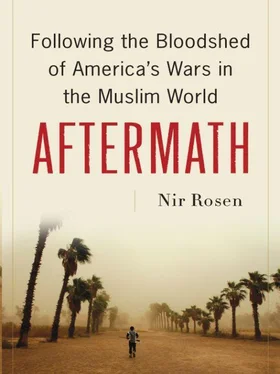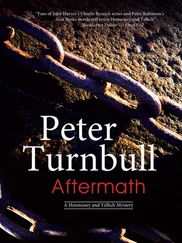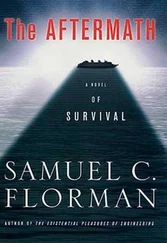Ariel David Adesnik, a defense analyst who works as a consultant for the U.S. government, has been critical of attempts to turn COIN into a science. “One of the hardest parts of COIN operations is measuring progress,” he says. “There is a strong temptation to measure progress with statistics, since numerical data imply a measure of objectivity. The counterinsurgency manual says you need twenty pairs of boots on the ground for every thousand inhabitants in the area of operations. This ratio has become an article of faith across the political spectrum. Yet the twenty-per-thousand rule is little more than a plausible guess based on a handful of historical examples, such as the British operations in Malaya and Northern Ireland. No one is exactly sure how to count either soldiers or inhabitants. Does a logistics officer at headquarters count the same as an infantryman on patrol? Does a rookie Afghan cop count the same as a battle-hardened Marine? What about contractors?
“The population isn’t much easier to count. The population of an Iraqi or Afghan district is often a matter of guesswork. Should peaceful districts be included in the area of operations, or only those with a certain amount of violence? If you change the rules for counting, the ratio of troops to inhabitants can go up or down by a factor of two, three, or more. Using historical data, my research team tried to figure out the actual ratios employed in around forty COIN operations over the past sixty-five years. We found a rough correlation between higher ratios and better outcomes, especially at ratios of thirty to fifty troops per thousand inhabitants. Other researchers found no correlation at all.”
In theory, success to McChrystal would result in a handover to the Afghan security forces. But there weren’t enough of them, they were hopelessly incompetent or corrupt, and the few good ones were too often killed. The Provincial Reserve police were not paid until they completed their training and took a urine test for drugs. Then they got their back pay. But out of the eighty men scheduled to take the test in July 2009, only fifty-three showed up, some refused to take it, and twenty tested positive. Meanwhile, of twenty-five new police recruits in Helmand, twenty tested positive for marijuana, opium, or both. An Air Force major conducting drug tests on police throughout the country told me that in some districts 60 percent of the police force tested positive. The south was the worst. Some police had tried to give him water instead of urine. Sergeant Kilaki thought the Provincial Reserve needed more training in tactics, techniques, and procedures as well as scenarios. “It sounded like they just dragged the eight-week curriculum to fourteen weeks,” Captain Westby said.
The Taliban Is Everywhere
In July 2009 a police checkpoint on Highway 601 had observed the Taliban destroying the road and constructing a four-foot barrier on it. Team Prowler and the Provincial Reserve went back on the road and clashed with twelve to fifteen Taliban, killing at least one. The team had no engineer assets, so they couldn’t take down the barrier. The Taliban cleverly diverted traffic through the village to shake people down and control who passed. Colonel Shirzad sent the Provincial Reserve, with Lieutenant Farid in command, without their American mentors to Highway 601.
Lieutenant Farid’s Ford Ranger drove over an IED or was hit by an RPG and was blown to pieces. Farid was killed along with two other cops. Five PR men were killed and five wounded in action in seven days. “601 is the most insecure road in Afghanistan,” said Sergeant First Class Clark. “There’s nothing but Taliban out there. That road is the lifeline to Lashkar Gah. We’re being asked to deal with it with fifty-five men, and we lost five last night and five in the last fight.” Team Prowler was supposed to have eighty police with them, but the British had taken some for themselves. There weren’t enough police to go around.
I had met Lieutenant Farid when I first arrived in Lashkar Gah. I had hoped to interview him at length. He was jovial and chubby and had a short beard, and he looked older than his twenty-eight years. Farid was Colonel Shirzad’s cousin from Helmand. Before he set off on his mission, his kids came to see him at the base. He was good-humored and an advocate for his men, apparently. At first he had a hard time delegating responsibility. NCOs were weak in the Afghan security forces, so he was a dominant figure and his loss was even bigger. The Americans took Farid’s loss heavily. “He was going to be a good commander,” said Westby. “It’s frustrating.” Staff Sergeant Enriquez had worked with Farid for seven months. “He’s one of the only noncorrupt officers there were,” he said. “I was pissed. He worked his ass off for his men. It felt like losing one of our own.”
“We’re asking a lot from these men,” Westby said worriedly about the police. Westby was also frustrated by the British army, who controlled security in the Helmand province and who he had to report to, as well as his American masters in Kandahar. “The British attitude is ‘Go now, get your men out there and go.’ These are cops, not soldiers, but we’re treating them like soldiers.” Clark sympathized with them too. “We come out here for a year and we’re done. These ANP come out here until they get killed.”
Despite the loss, the police were told to go on a mission the next night by the British to relieve four checkpoints of highway police. The highway police were supposed to have been disbanded because they were committing highway robbery, but they still existed. The police would set up three checkpoints while the highway patrolmen were sent to training. “These ANP are mentored by the British,” I was told, “even the British say they’re shit.” One American added, “But all the cops mentored by the British are shit.”
The British warned Team Prowler that Highway 601 was blown in three places and that there were IEDs all over, on and off the road. I wondered why eight thousand British soldiers in Helmand had such difficulty controlling one fifty-kilometer stretch of road. “601 is impassable,” a British officer had admitted to Clark. Many officers I spoke to complained about how imperious the British were to them and the Afghans.
The British were commanded by Lieutenant Colonel Jasper de Quincy Adams, who worked closely with Colonel Shirzad. The mission was to clear Popalzai, a Taliban-dominated village along the highway. Prowler and the police would take one side, while the British and the Afghan army would take the other side and deny the Taliban an escape route. “There’s nobody good left in Balochan and Popalzai,” Dyer told me. “They sent all the women and children away. There’s nobody good left. They’re really bad.” The police also said there was nobody good left in those towns. The Americans told me how odd it was that they never received a brief on the rules of engagement, which varied depending on what province they were in. It was as if there were no rules for Helmand. One American called it “an open-fire zone.”
Clark was unhappy that Team Prowler was going in their more vulnerable Humvees and not in the Cougars, larger vehicles suspended higher above the ground. But the Humvees were necessary if they went off-road in villages. “We’re not a fuckin’ route clearance package,” said Dyer. “Who are we gonna send out to blow ’em?” “We can say we’re not going,” Westby said with frustration. But even if he didn’t go, his police would, and it was Prowler’s job as the mentor team to go with them. “I’m pissed at [Lieutenant Colonel] Jasper too,” he said. “I see people getting hurt or killed if we do route clearance with the police,” Dyer said. “The police should be given assets. If you’re not going to give us the assets, don’t fucking ask us to do it.”
Читать дальше











